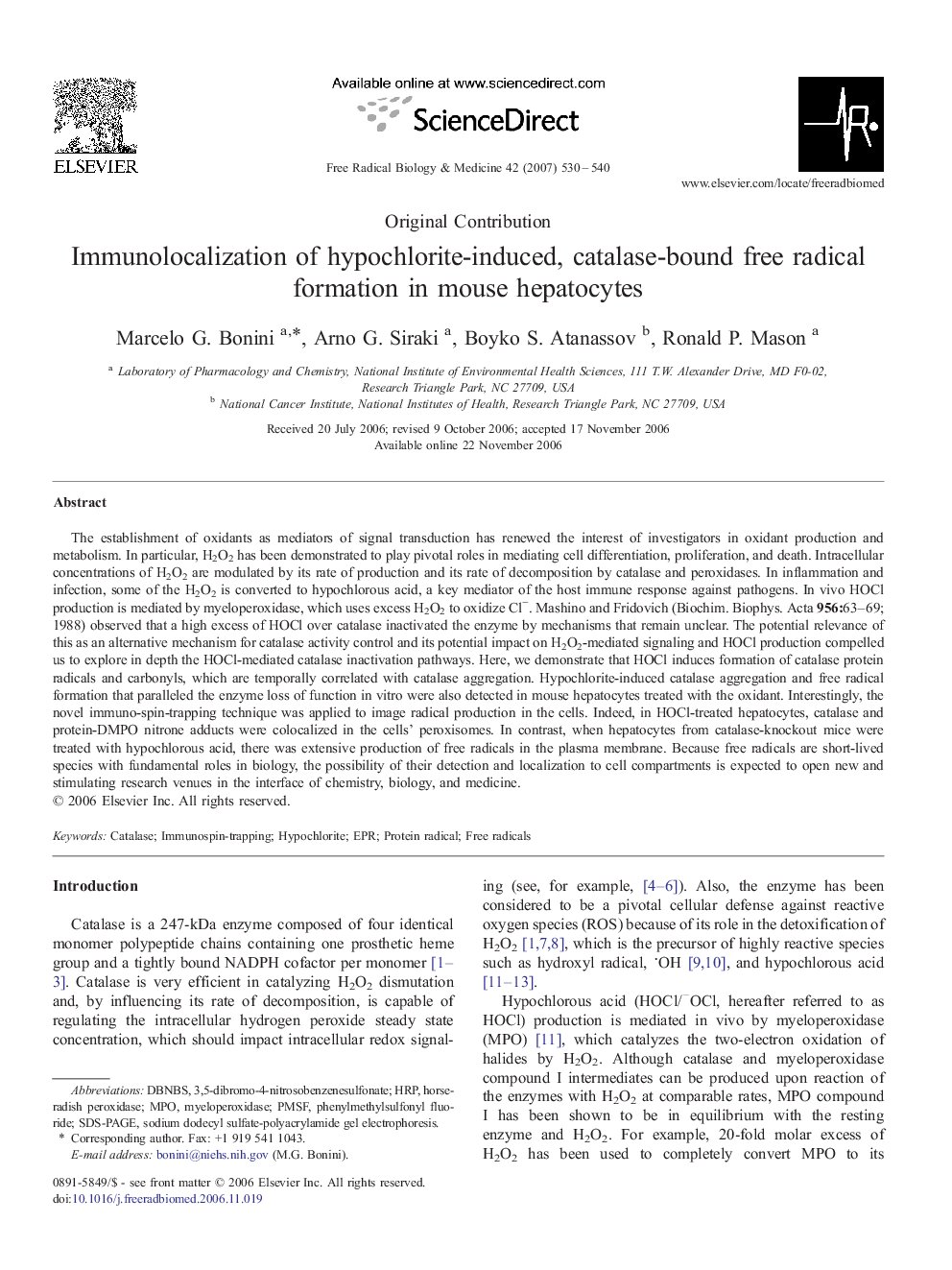| Article ID | Journal | Published Year | Pages | File Type |
|---|---|---|---|---|
| 1910657 | Free Radical Biology and Medicine | 2007 | 11 Pages |
The establishment of oxidants as mediators of signal transduction has renewed the interest of investigators in oxidant production and metabolism. In particular, H2O2 has been demonstrated to play pivotal roles in mediating cell differentiation, proliferation, and death. Intracellular concentrations of H2O2 are modulated by its rate of production and its rate of decomposition by catalase and peroxidases. In inflammation and infection, some of the H2O2 is converted to hypochlorous acid, a key mediator of the host immune response against pathogens. In vivo HOCl production is mediated by myeloperoxidase, which uses excess H2O2 to oxidize Cl−. Mashino and Fridovich (Biochim. Biophys. Acta 956:63–69; 1988) observed that a high excess of HOCl over catalase inactivated the enzyme by mechanisms that remain unclear. The potential relevance of this as an alternative mechanism for catalase activity control and its potential impact on H2O2-mediated signaling and HOCl production compelled us to explore in depth the HOCl-mediated catalase inactivation pathways. Here, we demonstrate that HOCl induces formation of catalase protein radicals and carbonyls, which are temporally correlated with catalase aggregation. Hypochlorite-induced catalase aggregation and free radical formation that paralleled the enzyme loss of function in vitro were also detected in mouse hepatocytes treated with the oxidant. Interestingly, the novel immuno-spin-trapping technique was applied to image radical production in the cells. Indeed, in HOCl-treated hepatocytes, catalase and protein-DMPO nitrone adducts were colocalized in the cells' peroxisomes. In contrast, when hepatocytes from catalase-knockout mice were treated with hypochlorous acid, there was extensive production of free radicals in the plasma membrane. Because free radicals are short-lived species with fundamental roles in biology, the possibility of their detection and localization to cell compartments is expected to open new and stimulating research venues in the interface of chemistry, biology, and medicine.
